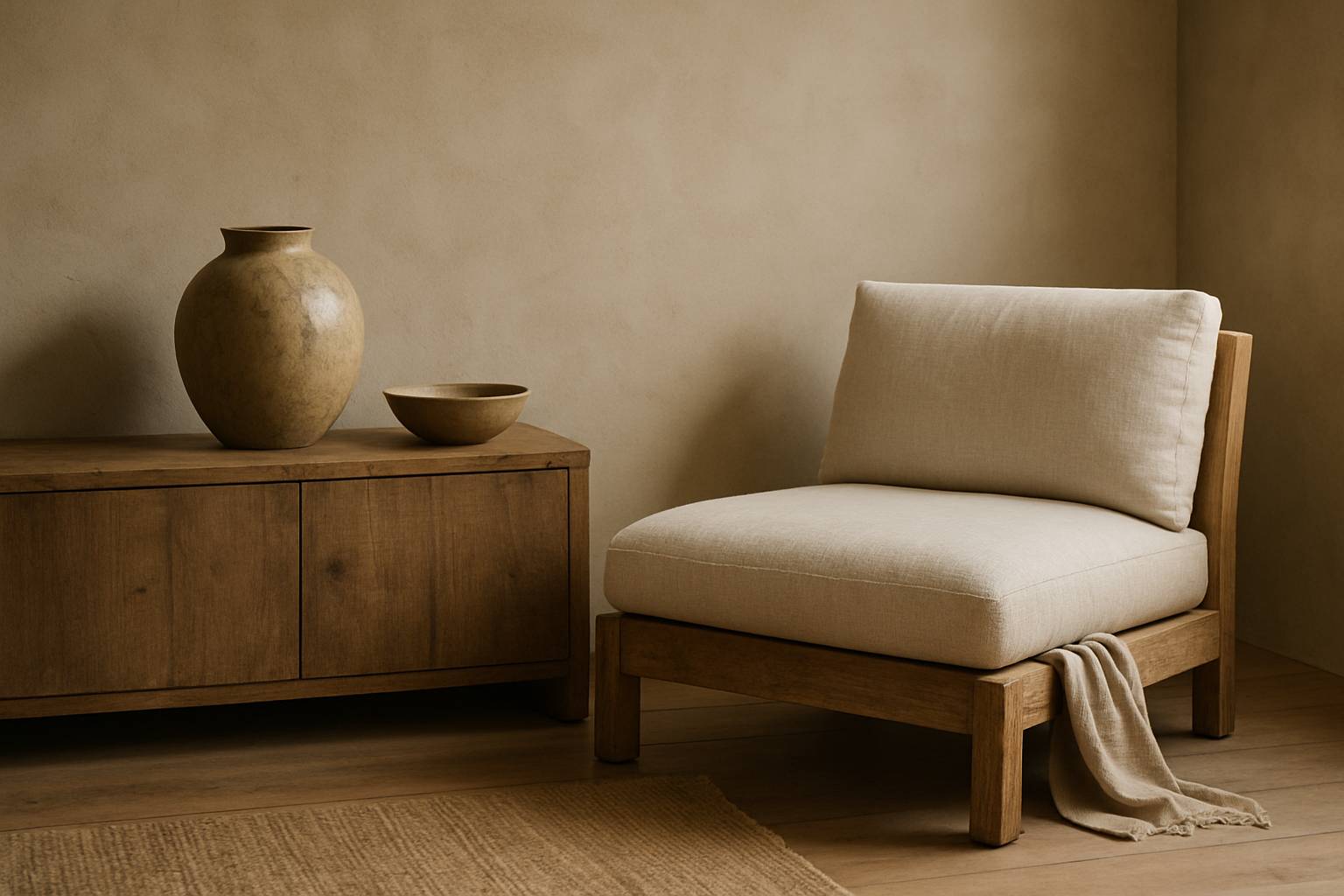Harnessing Wabi-Sabi Aesthetics in American Home Design
The art of embracing imperfection and finding beauty in the aging process has long been a cornerstone of Japanese philosophy. Now, this ancient concept known as wabi-sabi is making waves in American interior design, offering a refreshing antidote to the polished perfection that has dominated home decor trends for years. As homeowners seek more authentic and grounded living spaces, wabi-sabi presents an opportunity to create environments that are both visually striking and deeply meaningful.

Origins and Principles of Wabi-Sabi
Wabi-sabi finds its roots in ancient Japanese tea ceremonies, where simplicity and rustic elegance were prized above ornate decorations. The term wabi originally referred to the loneliness of living in nature, away from society, while sabi meant withered or lean. Over time, these concepts merged to embody a worldview that accepts transience and imperfection as part of life’s beauty.
In design terms, wabi-sabi manifests as an appreciation for natural materials, irregular forms, and the marks left by time and use. It’s about stripping away the unnecessary and finding beauty in the essential. This philosophy stands in stark contrast to the glossy, mass-produced aesthetic that has dominated much of modern design.
Adapting Wabi-Sabi to American Homes
While traditional Japanese wabi-sabi might seem austere to American sensibilities, designers are finding ways to adapt its principles to suit Western tastes. This often involves blending wabi-sabi elements with existing decor styles to create spaces that feel both grounded and livable.
One approach is to incorporate natural, unfinished materials like raw wood, stone, and clay. These materials age gracefully, developing character over time. Designers might pair a sleek modern sofa with a coffee table made from reclaimed wood, its knots and imperfections on full display. The contrast creates a dynamic and inviting space that tells a story of both past and present.
The Role of Texture in Wabi-Sabi Design
Texture plays a crucial role in bringing wabi-sabi aesthetics to life in American homes. Instead of smooth, uniform surfaces, wabi-sabi embraces rough textures, uneven finishes, and visible craftsmanship. This could manifest as hand-thrown pottery, woven textiles with visible imperfections, or walls with a weathered plaster finish.
Incorporating these textures adds depth and interest to a space, inviting touch and creating a multi-sensory experience. A room might feature a mix of smooth leather, nubby linen, and rough-hewn wood, each element contributing to a rich tapestry of tactile sensations.
Color Palettes Inspired by Nature
Wabi-sabi color schemes draw inspiration from the natural world, favoring earthy tones and muted hues. Think of the soft greys of weathered wood, the warm browns of clay, or the subtle greens of moss. These colors create a calming atmosphere and connect the interior space with the outdoor environment.
In American homes, these nature-inspired palettes are being used to create serene backgrounds for daily life. A living room might feature walls in a soft, chalky white, accented with furniture in deeper earth tones. The key is to avoid stark contrasts or overly saturated colors, instead opting for a harmonious blend that feels organic and restful.
Curating with Intention: The Art of Less
Perhaps the most challenging aspect of wabi-sabi for many Americans is its emphasis on minimalism. In a culture often defined by abundance, the idea of intentionally leaving spaces empty or sparsely decorated can feel uncomfortable. However, this principle of wabi-sabi offers a powerful antidote to the clutter and visual noise that often plague our homes.
Designers applying wabi-sabi principles encourage homeowners to curate their possessions carefully, keeping only items that are truly meaningful or functional. This might mean displaying a single, cherished piece of art rather than a gallery wall, or opting for open shelving with just a few carefully chosen objects.
Embracing the Cycles of Nature
Wabi-sabi design acknowledges and celebrates the changing seasons and the passage of time. In American homes, this translates to interiors that evolve and adapt throughout the year. Rather than static spaces, wabi-sabi inspired rooms might feature elements that change with the seasons – lightweight linen curtains in summer replaced by heavier drapes in winter, or displays of foraged natural materials that reflect the current season.
This approach not only keeps interiors feeling fresh and dynamic but also fosters a deeper connection to the natural world and the rhythms of life. It’s a reminder that our homes, like everything in nature, are in a constant state of flux.
The Future of Wabi-Sabi in American Design
As more Americans seek alternatives to the sleek, perfection-driven aesthetics that have dominated interior design, wabi-sabi offers a compelling vision for the future. Its emphasis on authenticity, simplicity, and connection to nature resonates with contemporary values of sustainability and mindfulness.
Looking ahead, we can expect to see more integration of wabi-sabi principles in American homes. This might manifest as an increased demand for artisanal and handcrafted items, a revival of traditional craft techniques, or innovative uses of natural and reclaimed materials in construction and decor.
The beauty of wabi-sabi lies in its flexibility and its emphasis on personal interpretation. As it continues to gain traction in the United States, we’ll likely see a uniquely American version emerge – one that honors the philosophy’s Japanese roots while adapting to Western lifestyles and aesthetics.
In embracing wabi-sabi, American homeowners and designers are not just adopting a new style; they’re shifting their perspective on what makes a space beautiful and livable. It’s a move away from perfection and towards authenticity, from the disposable to the enduring. In a world that often feels chaotic and uncertain, the serene and grounded spaces inspired by wabi-sabi offer a welcome respite – a chance to find beauty in the imperfect, peace in the simple, and meaning in the marks left by time.





